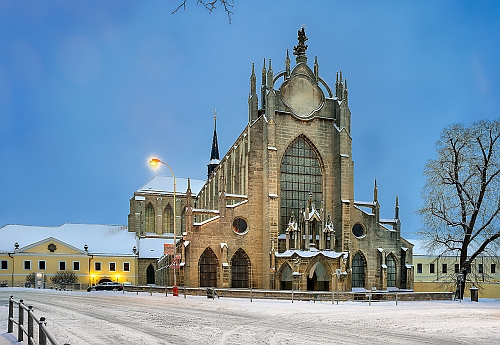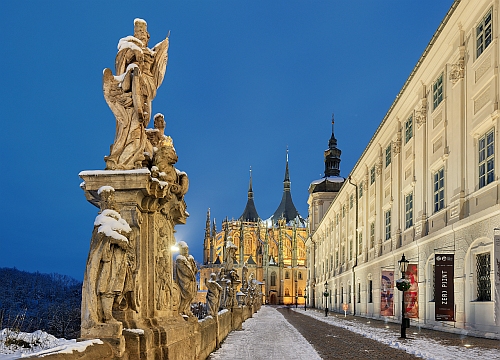Italian Court
Kutná Hora
The Italian Court was rightly called the “jewel” of the crown of the Bohemian monarchs and its charm has survived to this day. The Italian Court is a former royal mint and royal palace, a national cultural monument of European significance with a thousand-year history.
The original fortified residence from the end of the 13th century was rebuilt into a central royal mint by King Wenceslas II in 1300. The coinage reform included the closure of small mints scattered throughout the Czech Kingdom and the introduction of a new coin, the Prague groschen. The production of this currency was concentrated in the vicinity of the richest source of silver in the country – the newly established mint in Vlašský dvůr in Kutná Hora, which thus gained a privileged position in the kingdom. King Wenceslas IV, who liked Kutná Hora and often stayed there, adapted the Vlašský dvůr to the needs of the monarch’s residence – he had the royal palace built, which included his private and representative spaces, and St. Wenceslas Chapel. Many important historical events took place in the new royal residence: in 1409 the Kutná Hora Decree was signed here, in 1444 the future Czech king Jiří of Poděbrady was elected supreme governor of the East Bohemian landfrieds and in 1448 he was elected provincial governor here, in 1471 the young Polish prince Vladislaus the Jagiellonian was elected king of Bohemia here. Later on, the Italian Court gradually began to lose its importance and under the leadership of the architect Ludvík Labler it underwent another extensive and costly reconstruction at the end of the 19th century. The Neo-Gothic rebuilding gave the Italian Court its present appearance and restored the original grandeur, splendour and elegance of the royal residence.
Italian Court now offers three sightseeing routes with interactive elements that will be appreciated not only by children but also by playful adults. Visitors can pick up worksheets at the ticket office, look for the hidden goblins during the tours and explore the exhibitions in a fun and entertaining way. The newly opened cellars offer the Mystery of Lost Silver, where visitors can try out the passage through a mine corridor and also learn about the legend of Kutná Hora on light panels. The Royal Mint contains 160 coins minted in the Kutná Hora Mint. The last room in the exhibition is full of interactive exhibits that you can touch or try out. At the end, you can even take away a hand-stamped Prague groschen. The Royal Palace exhibition is guided and Wednesday tours will be led by a guide in a historical costume. Touch screens were placed in the corridors for the visitors to get to know the significant people of Kutná Hora and the history of the city administration. In the visitor centre and the section called A Quick Trip through the World of Kutná Hora, visitors can rest for a while or get more information about Kutná Hora, local monuments and the course of the project. You can find out more about the Vlašský dvůr on the website of the Kutná Hora Guide Service.


